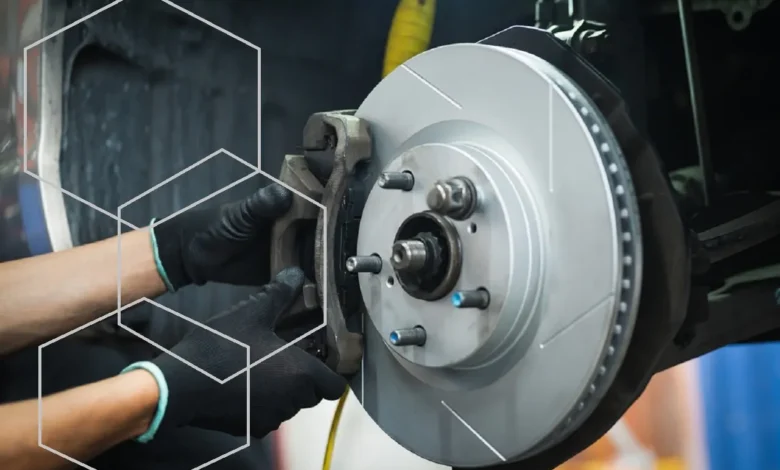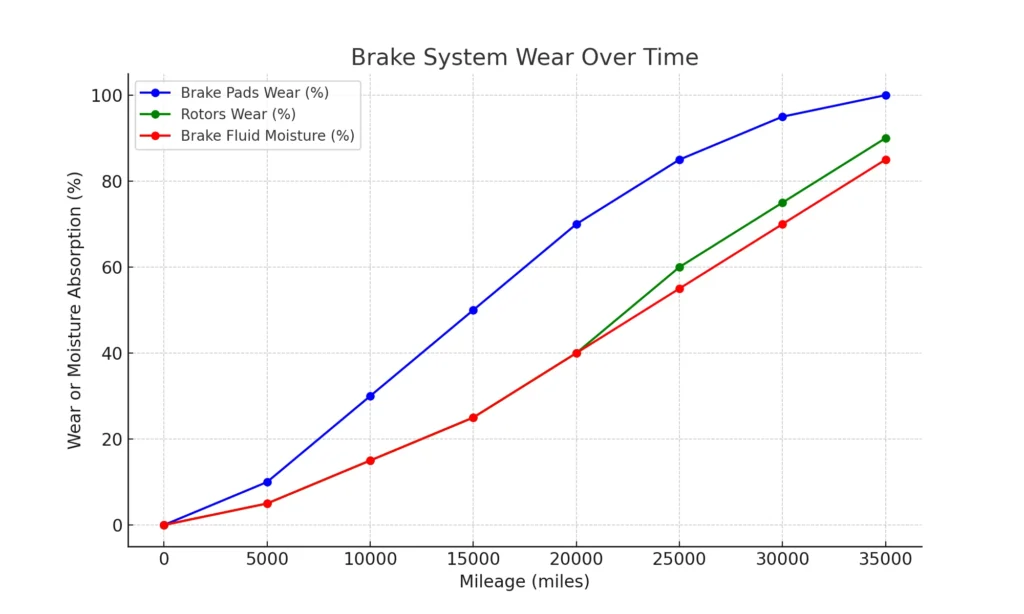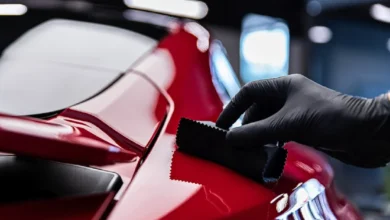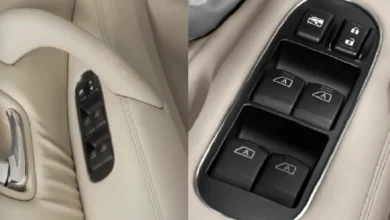
You depend on your brakes every time you drive. They keep you safe by providing the stopping power you need to avoid accidents. However, brake systems are complex and prone to wear over time. Without regular maintenance, brakes can lose their effectiveness, putting you at risk.
In this guide, we’ll cover everything you need to know about car brake maintenance. From simple checks you can do yourself to tips on keeping your brake system in top condition, this article will walk you through it all. Follow these steps to make sure your brakes work when you need them most.
Understanding Your Brake System
Before diving into maintenance, let’s take a closer look at how car brakes work.
| Brake Component | Description |
| Brake Pads | Contact the rotor to create friction, slowing down the vehicle. |
| Rotors | Metal discs attached to the wheels that the brake pads grip. |
| Brake Calipers | Hold the brake pads and apply pressure to the rotor when braking. |
| Brake Lines | Carry brake fluid from the master cylinder to the brakes. |
| Master Cylinder | Contains the brake fluid and generates pressure. |
Each part plays a crucial role in stopping your car. Understanding these components can help you identify when something isn’t working right.
Signs Your Brakes Need Attention
A well-maintained brake system should work quietly and effectively. However, certain signs indicate potential issues:
- Squeaking or Grinding Noises – Often due to worn brake pads.
- Vibrations When Braking – Could mean your rotors are warped or need attention.
- Longer Stopping Distances – May be due to worn pads, low fluid, or a failing component.
- Warning Lights – A brake light on your dashboard can signal a problem.
- Spongy Brake Pedal – Indicates possible air in the brake lines or low fluid levels.
If you notice any of these signs, it’s time to inspect your brakes.
How to Check Your Brakes
Learning how to check car brakes is essential for any driver. Here’s a quick guide to help you assess the health of your brake system.
1. Check Brake Pads
- Inspect visually – Look through your wheel spokes to spot the brake pads.
- Measure thickness – New brake pads are around 8-12 mm thick. Replace if below 3 mm.
2. Examine Brake Rotors
- Check for smoothness – Rotors should be smooth. Deep grooves or scoring suggest replacement.
- Measure thickness – If you have a micrometer, you can measure rotor thickness. Check your manual for minimum specs.
3. Test Brake Fluid
- Look for color changes – Fresh brake fluid is clear or light amber. If it’s dark, it’s time for a change.
- Check fluid level – The fluid reservoir should be at the maximum line.
4. Listen for Unusual Sounds
- A squeak could mean worn pads.
- Grinding may indicate metal-to-metal contact, which can damage rotors.
5. Test the Brake Pedal
- Firmness – A healthy brake pedal should feel firm, not soft or spongy.
- Responsiveness – Your brakes should engage immediately when you press the pedal.
Essential Brake Maintenance Tips
Keeping up with routine brake maintenance is crucial for your vehicle’s safety. Here are some essential steps you should follow:
1. Replace Brake Pads Regularly
Brake pads wear out faster than other components. Replace them as soon as they reach 3 mm or less. Worn-out pads can damage rotors, leading to more costly repairs.
2. Flush the Brake Fluid
Over time, brake fluid can absorb moisture, reducing its effectiveness. It’s recommended to flush your brake fluid every 2 years or as suggested by your manufacturer.
3. Inspect Brake Lines
Look for cracks or leaks in your brake lines, especially if your car is older. Leaking fluid can reduce brake power, which is dangerous.
4. Resurface or Replace Rotors
Resurfacing your rotors helps remove grooves and keeps them smooth. However, if they’re too thin or deeply scored, it’s best to replace them.
Common Brake Maintenance Issues and Solutions
| Issue | Possible Cause | Quick Fix |
| Squeaky Brakes | Worn brake pads | Replace brake pads |
| Brake Pedal Feels Soft | Air in brake lines | Bleed the brake lines |
| Brake Fluid Leak | Damaged brake lines | Replace or repair brake lines |
| Vibration When Braking | Warped rotors | Resurface or replace rotors |
Tip: Address these issues promptly to avoid further damage and ensure your brakes stay in top condition.
DIY vs. Professional Brake Maintenance
While many brake maintenance tasks can be done at home, some require specialized tools and expertise. Here’s a quick breakdown:
DIY Maintenance Tasks
- Replacing brake pads
- Inspecting brake fluid
- Checking brake rotors
Professional Tasks
- Brake fluid flushing
- Rotor resurfacing
- Brake line replacement
In general, if you’re comfortable with tools, you can handle basic brake maintenance. For more complex jobs, it’s best to consult a professional.
Maintaining Brake Safety in Different Conditions
Certain driving conditions put additional strain on your brakes. Here are some tips for keeping your brakes safe in different environments.
| Condition | Maintenance Tip |
| Mountain Driving | Downshift to reduce brake usage. |
| City Driving | Brake gently to avoid overheating. |
| Wet Conditions | Apply brakes gently to prevent slipping. |
| Heavy Load Towing | Use engine braking to reduce strain. |
Taking these extra precautions can help prolong the life of your brakes.
How Often to Check Your Brakes
Frequent checks ensure you spot any issues early on. Here’s a suggested maintenance schedule:
| Component | Inspection Frequency |
| Brake Pads | Every 10,000-15,000 miles |
| Rotors | Every 20,000-30,000 miles |
| Brake Fluid | Every 2 years or 30,000 miles |
| Brake Lines | Annually |
Brake Maintenance Myths and Facts
There are several misconceptions about brake maintenance. Let’s clear up a few:
- Myth: You only need to replace brakes if you hear noises.
- Fact: Waiting for noise can lead to costly repairs. Check them regularly.
- Myth: Brake fluid never needs replacing.
- Fact: Brake fluid absorbs moisture, so it’s essential to flush it every two years.
- Myth: Hard braking is the best way to stop quickly.
- Fact: Hard braking overheats your brakes, leading to faster wear.
Visual Guide to Brake System Wear
Below is a chart showing typical wear rates for brake pads, rotors, and brake fluid:

Conclusion
Keeping your brakes in top shape is essential for your safety. Regular inspections, timely repairs, and understanding the signs of wear can extend the life of your brake system. Whether you’re a DIY enthusiast or prefer professional service, following the steps in this guide will keep your car’s brakes in reliable condition.
We hope you found this article helpful. If you did, check out our blog for more great content like this.





